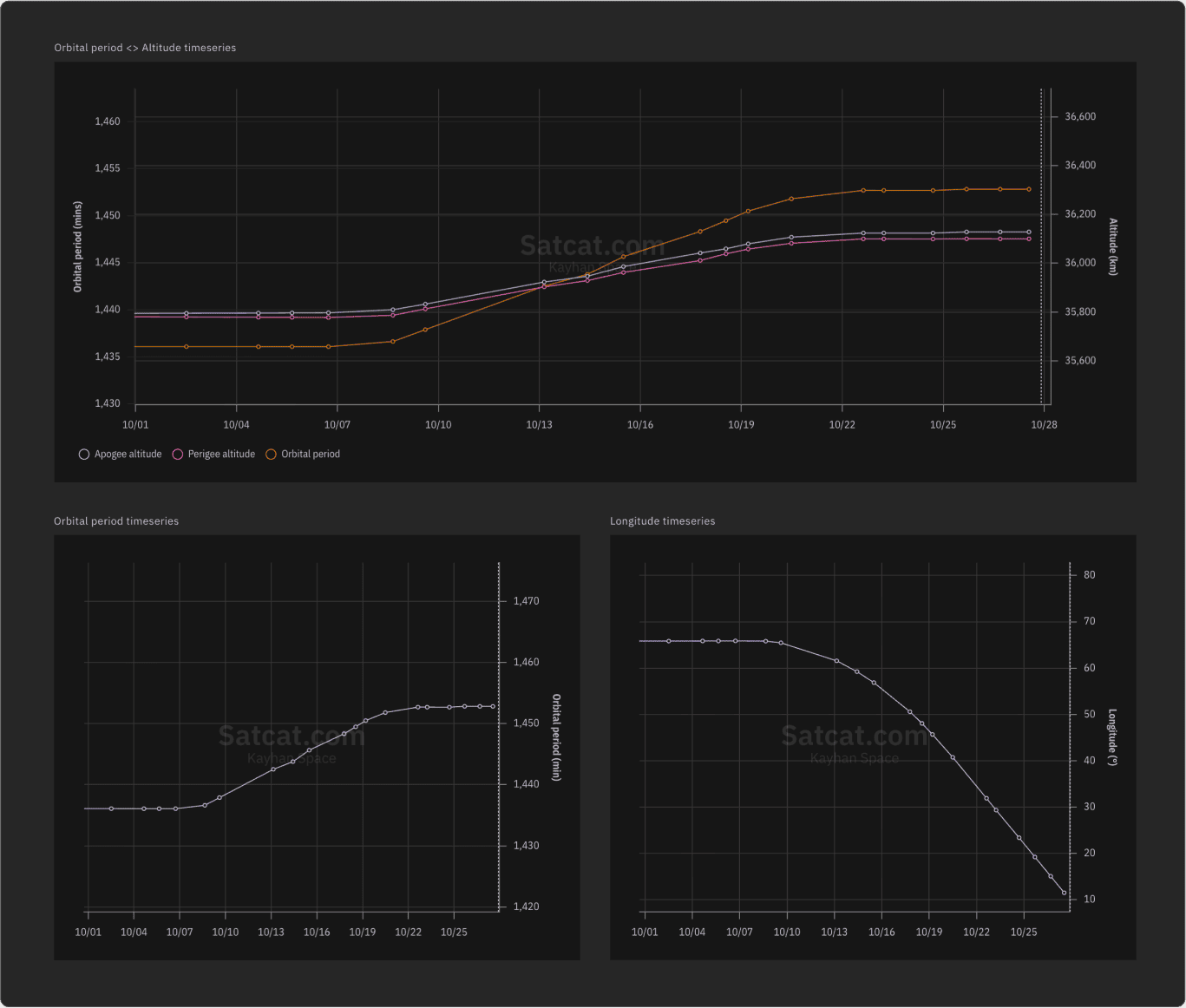Russia’s LUCH (OLYMP), 40258, launched in 2014 by a Proton-M/Briz-M, became one of the most closely watched and debated satellites in geostationary orbit. Officially described as a military communications relay within the Luch data relay network—conceptually similar to NASA’s TDRSS—it was reportedly developed under the direction of the Federal Security Service (FSB) to support both secure communications and signals intelligence (SIGINT) operations. The satellite has demonstrated extraordinary maneuverability powered by electric xenon and hydrazine propulsion—capable of shifting position across GEO (Hendrickx 2023).
Over the past decade, Luch conducted a series of deliberate proximity operations with commercial and military spacecraft, including Seasat 2, Intelsat 7, Intelsat 901, Intelsat 905, Athena-Fidus, Skynet 4C, Astra 1G, and Turksat 4B (Hendrickx 2023; Roberts 2022; Kronts 2023). Its persistent “shadowing” of targets marked a new era of on-orbit intelligence collection and drew strong criticism from Intelsat and the French Defense Minister (Gruss 2015; Roberts 2022). These actions fundamentally reshaped how operators assess safety, intent, and transparency in geostationary orbit.
 Figure 1: Altitude and longitude evolution of Russia’s LUCH (OLYMP), 40258 in October 2025.
Figure 1: Altitude and longitude evolution of Russia’s LUCH (OLYMP), 40258 in October 2025.
In October 2025, the satellite initiated a series of altitude-raising burns, climbing more than 400 km above the protected region and drifting west by ~35 degrees over the course of two weeks as portrayed in Figure 1. Whether an intentional disposal or a repositioning for its final tasking, the maneuver brings one of the most agile and enigmatic intelligence assets ever fielded in geostationary orbit closer to the end of its mission lifetime.
Its successor, LUCH (OLYMP) 2, 55841 — launched in March 2023 with comparable maneuvering and intelligence capabilities—continues that lineage, extending the mission and operational philosophy of Luch into a new generation of Russian geostationary surveillance assets.
References
1.Bart Hendrickx. 2023. “Olimp and Yenisei-2: Russia’s secretive eavesdropping satellites (part 1).” The Space Review. November 20, 2023. https://www.thespacereview.com/article/4696/1
2. Thomas G. Roberts. 2022. “Unusual Behavior in GEO: (Luch Olymp-K).” The Aerospace Security. September 1, 2022. https://aerospace.csis.org/data/unusual-behavior-in-geo-olymp-k/
3. Michael Kronts. 2023. “Espionage in Orbit: Satellite or Spy?” Kratos Space. April 17, 2023. https://www.kratosspace.com/constellations/articles/espionage-in-orbit-satellite-or-spy
4. Mike Gruss. 2015. “Russian Satellite Maneuvers, Silence Worry Intelsat.” Space News. October 9, 2015. https://spacenews.com/russian-satellite-maneuvers-silence-worry-intelsat/
5. Thomas G. Roberts. 2022. “ Luch (Olymp) / Athena-Fidus.” Satellite Dashboard. March 18, 2022. https://satellitedashboard.org/analysis/luch-olymp-athena-fidus/
